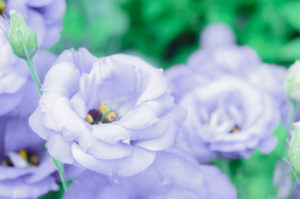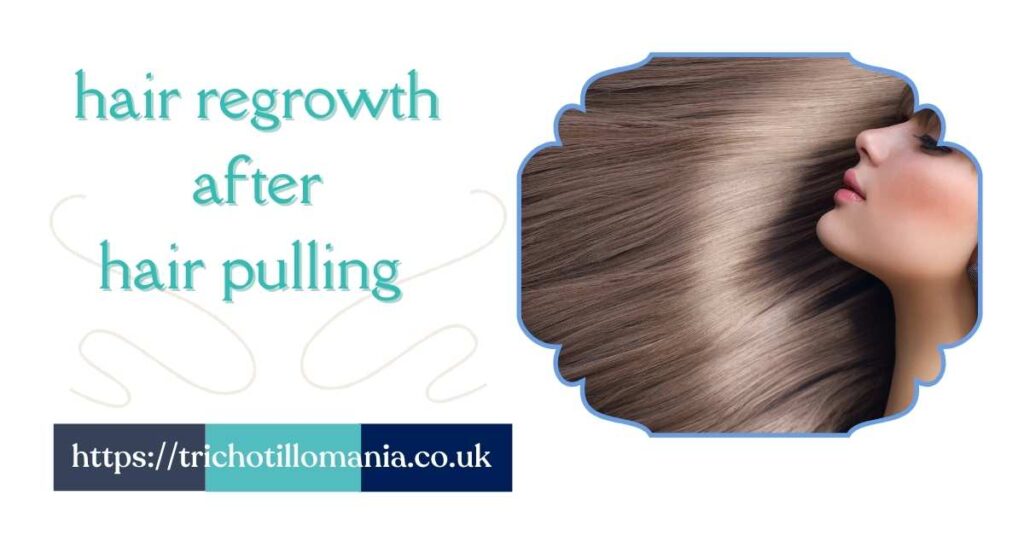Guidance on the regrowth of hair after pulling

KERATIN, the same strong protein that makes fur and feathers in animals, and the outermost layer of skin and nails in humans, is the main protein composition of our hair.
Each strand of hair consists of three layers.
MEDULLA – is the innermost layer which is only present in larger, thicker hairs.
CORTEX – This is the middle layer and is responsible for the texture and color of hair.
CUTICLE – This is a thin, colorless protective layer.
Below the surface of the skin is the hair root, which is enclosed within the hair follicle. At the base of the hair follicle is the DERMAL PAPILLA. The dermal papilla is fed by the bloodstream, which carries nourishment to produce new hair. The dermal papilla is very important to hair growth because it contains receptors for ANDROGENS, which regulates hair growth
To understand how hair grows, lets take a look at the normal hair growth cycle.
Hair follicles follow a genetically programmed cycle that can be broken down into 3 stages.
ANAGEN – GROWTH PHASE
About 85% of hair follicles are in the growth stage at any one time. This stage varies from 2-5 years with hair growing approx 10cm per year. Eyelash, arm and leg follicles have a shorter growth stage lasting only a few months so the resulting hairs are shorter.
CATAGEN – TRANSITIONAL PHASE
This stage lasts about two weeks. During this stage the follicle shrinks to 1/6 its normal size. The lower part of the follicle is absorbed by the body and hair growth ceases.
TELOGEN – RESTING PHASE
About 15% of hair follicles are in this stage at any one time. The resting phase normally lasts about 2 months. During this stage the bulb of the hair shaft moves closer to the surface of the skin. This causes the hair to loosen and then it is shed. At the end of the telogen phase the hair follicle re-enters the anagen phase. The follicle enlarges again and a new growth cycle starts.
Hair is continually shed and renewed by the alternating cycle of growth, rest, fallout, and renewed growth. Each follicle follows this cycle independently of others, so the total number of hairs normally remains consistent. On average 50 -100 hairs are shed per day. This does sound a lot but when you consider the total number of follicles on your scalp is around 150,000, it is a very small amount.
Beard hairs and eyebrows can be easier to damage from hair pulling.
FOLLICLE DAMAGE
When you pull a hair the hair follicle will try and repair any damage that has occurred. The human body has a remarkable way of repairing itself but this can take some time. If you pull a hair and the root is not pulled out this means that the hair is in its resting phase, however if you pull a hair with the root attached the hair is in the active phase which means it is actively growing. If you pull part of the root out this can damage the hair follicle.
The BLACK tip you see on some hairs is the area responsible for color pigment. While the hair follicle is repairing the hair will grow but the MELANIN (which gives hair its color) will not have ‘fused’ with the protein cells that are our hair, causing the hair to grow in grey or white. In time your normal hair color may re-establish itself, but this is not always the case. The follicle may be repaired enough to grow but the formation of melanin can cease which causes the hair to stay grey or while. Hair can also grow in different eg- if you have straight hair it may grow in curly.
If you pull the hair and the whole follicle comes out with a RED tip, you have just detached the blood supply and muscle. This is permanent damage. This means that the hair will NOT grow back.
RECOVERY TIME FRAME
Different areas have different chances for recovery speed. This is just an estimate of how long FULL recovery will take. You will see new growth fairly quickly in most cases.
EYELASHES – Some people can get FULL recovery in 6 months but if you have been pulling for many, many years it could be 2-4 years.
EYEBROWS – FULL recovery can be slower than lashes because this area is more easily damaged and for some people it does not totally grow back.
SCALP – FULL recovery for normal hair can take 2-6 years. This sounds like a long time but you have to remember that your hair only grows about an inch a month. You have to wait for each hair pulled to start its growth cycle again and if it is growing in “funny”, you have to give your body time to repair itself, then you have to wait to grow length again.
By now you will hopefully be receiving lots of lovely compliments about your hair. Trichotillomania Support recommend that you write them down in your own handwriting, to remind yourself why your recovery remains important to you. Reading them back can refresh and boost motivation when times seem rough.
Basically; your hair is set to get better and better!
Thank you so much for reading to the end of the page.






